Grow Asparagus Easily, even if you think you don’t have a green thumb! Have you ever dreamed of strolling into your backyard and harvesting fresh, tender asparagus spears for a delicious spring meal? It’s more attainable than you think, and this DIY guide will show you how to make that dream a reality. Forget those expensive, often woody, bundles from the grocery store. Imagine the satisfaction of nurturing your own asparagus patch and enjoying its bounty year after year.
Asparagus has a rich history, dating back to ancient Greece and Rome, where it was prized for its medicinal properties and culinary delights. The Romans even had special asparagus farms! Today, this delectable vegetable remains a springtime favorite, and growing your own allows you to connect with that history and enjoy the freshest possible flavor.
But why should you bother with the effort? Well, for starters, homegrown asparagus tastes significantly better than store-bought. Plus, it’s a sustainable and cost-effective way to enjoy this nutritious vegetable. Many people are intimidated by the thought of growing asparagus, believing it to be difficult or time-consuming. However, with the right knowledge and a few simple tricks, you can grow asparagus easily and successfully. This article will provide you with the essential DIY hacks and tips to cultivate a thriving asparagus patch, even in a small space. Let’s get started and unlock the secrets to a bountiful asparagus harvest!
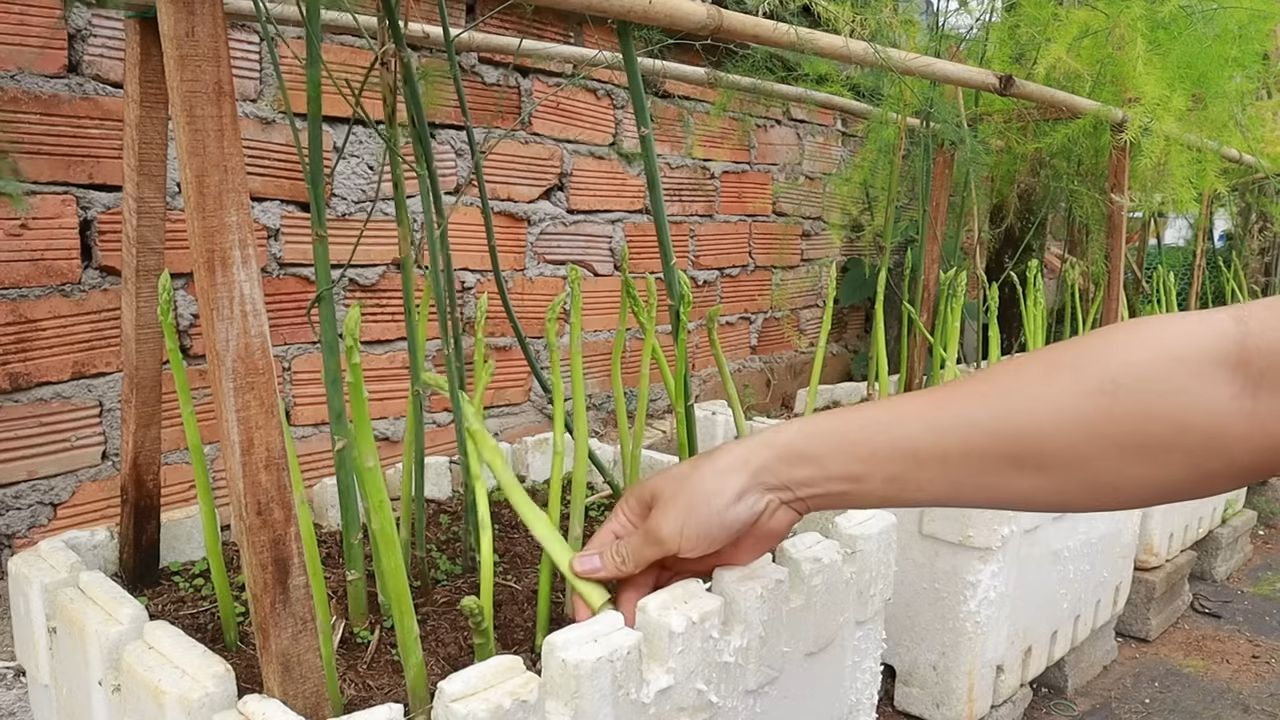
Growing Asparagus: A Beginner’s Guide to a Bountiful Harvest
Asparagus! Just the word conjures up images of spring, fresh flavors, and maybe even a fancy dinner. But did you know you can grow your own asparagus patch, right in your backyard? It might seem intimidating, but trust me, with a little patience and the right know-how, you can enjoy homegrown asparagus for years to come. This guide will walk you through everything you need to know, from choosing the right spot to harvesting your delicious spears.
Choosing the Right Asparagus Variety
Before we get our hands dirty, let’s talk about asparagus varieties. Not all asparagus is created equal! Different varieties have different characteristics, like disease resistance, spear size, and overall yield. Here are a few popular choices:
* ‘Jersey Knight’: This is a widely recommended male hybrid variety known for its high yields and disease resistance. It’s a great choice for beginners.
* ‘Jersey Giant’: Another male hybrid, ‘Jersey Giant’ produces large, thick spears and is also resistant to common asparagus diseases.
* ‘Purple Passion’: If you want something a little different, ‘Purple Passion’ offers beautiful purple spears that turn green when cooked. It’s sweeter and more tender than green varieties.
* ‘Millennium’: A Canadian variety, ‘Millennium’ is known for its cold hardiness and excellent spear quality.
I personally recommend starting with ‘Jersey Knight’ or ‘Jersey Giant’ if you’re new to asparagus growing. They’re reliable and easy to grow.
Preparing Your Asparagus Bed: Location, Location, Location!
Asparagus is a perennial, meaning it will come back year after year. So, choosing the right location is crucial. Think long-term! Here’s what asparagus needs to thrive:
* Full Sun: Asparagus needs at least 6-8 hours of direct sunlight per day. The more sun, the better!
* Well-Drained Soil: Asparagus hates wet feet! Make sure your soil drains well. If you have heavy clay soil, you’ll need to amend it with plenty of organic matter.
* Space: Asparagus plants can get quite large, so give them plenty of room to spread out. Aim for at least 4 feet between rows and 12-18 inches between plants.
* Avoid Shady Areas: Don’t plant asparagus under trees or near buildings that will cast shade.
* Consider the Future: Remember, this is a long-term commitment. Choose a spot where you won’t be disturbing the asparagus bed for many years to come.
Step-by-Step Planting Guide
Okay, now for the fun part! Let’s get those asparagus crowns in the ground.
1. Prepare the Soil: This is the most important step! Asparagus needs rich, well-drained soil. Start by digging a trench about 12 inches wide and 6-8 inches deep. Remove any rocks, weeds, or debris.
2. Amend the Soil: Mix in plenty of compost, well-rotted manure, or other organic matter. This will improve drainage, add nutrients, and create a healthy environment for your asparagus plants. I like to add a generous amount of bone meal as well, as it provides phosphorus, which is essential for root development.
3. Create a Ridge: In the bottom of the trench, create a small ridge of soil down the center. This will help to spread out the asparagus roots.
4. Plant the Crowns: Place the asparagus crowns on top of the ridge, spacing them about 12-18 inches apart. Make sure the crown is facing upwards and the roots are spread out around it.
5. Cover the Crowns: Gently cover the crowns with about 2-3 inches of soil. Don’t bury them too deep!
6. Water Thoroughly: Water the newly planted crowns well. This will help to settle the soil and encourage root growth.
7. Mulch: Apply a layer of mulch around the asparagus plants. This will help to retain moisture, suppress weeds, and regulate soil temperature. I like to use straw, wood chips, or shredded leaves.
8. Gradually Fill the Trench: As the asparagus plants grow, gradually fill in the trench with soil. This will encourage the development of a strong root system. Over the course of the first growing season, you’ll completely fill the trench.
Caring for Your Asparagus Patch: Watering, Weeding, and Feeding
Once your asparagus is planted, it’s important to provide proper care to ensure a healthy and productive patch.
* Watering: Asparagus needs consistent moisture, especially during dry periods. Water deeply and regularly, especially during the first year. Aim for about 1 inch of water per week.
* Weeding: Keep your asparagus bed free of weeds. Weeds compete with asparagus for nutrients and water. Hand-pull weeds regularly or use a hoe to cultivate the soil. Be careful not to damage the asparagus crowns.
* Fertilizing: Asparagus is a heavy feeder, so it’s important to fertilize regularly. In the spring, apply a balanced fertilizer, such as 10-10-10. You can also side-dress with compost or well-rotted manure.
* Mulching: Maintain a layer of mulch around your asparagus plants. This will help to retain moisture, suppress weeds, and regulate soil temperature.
* Pest and Disease Control: Asparagus is generally pest and disease resistant, but it can be susceptible to certain problems. Keep an eye out for asparagus beetles, aphids, and fungal diseases. If you notice any problems, take action promptly. Insecticidal soap or neem oil can be effective for controlling pests. Fungicides can be used to treat fungal diseases.
Harvesting Your Asparagus: Patience is Key!
This is the hardest part: waiting! You need to be patient and let your asparagus plants establish themselves before you start harvesting.
* First Year: Do not harvest any spears during the first year. This allows the plants to focus on developing a strong root system.
* Second Year: You can harvest a few spears during the second year, but only for a short period of time (about 2-3 weeks).
* Third Year and Beyond: In the third year and beyond, you can harvest asparagus for a longer period of time (about 6-8 weeks).
How to Harvest:
* Harvest asparagus spears when they are about 6-8 inches tall and about as thick as your finger.
* Use a sharp knife to cut the spears at ground level.
* Harvest spears every day or two during the peak of the season.
* Stop harvesting when the spears become thin and spindly. This indicates that the plants are starting to put their energy into producing ferns.
Preparing Asparagus for Winter: Dormancy and Protection
As the weather cools down in the fall, your asparagus plants will start to turn yellow and die back. This is normal! Asparagus goes dormant during the winter.
* Cut Back the Ferns: Once the ferns have turned completely brown, cut them back to ground level.
* Mulch: Apply a thick layer of mulch over the asparagus bed. This will help to protect the crowns from freezing temperatures.
* Fertilize: You can apply a layer of compost or well-rotted manure in the fall to provide nutrients for the following spring.
Troubleshooting Common Asparagus Problems
Even with the best care, you might encounter some problems with your asparagus patch. Here are a few common issues and how to address them:
* Thin Spears: Thin spears can be caused by a number of factors, including lack of nutrients, insufficient watering, or overcrowding. Make sure you’re fertilizing regularly, watering deeply, and thinning out the plants if necessary.
* Asparagus Beetles: Asparagus beetles are small, colorful beetles that can damage asparagus spears and ferns. Hand-pick the beetles or use insecticidal soap to control them.
* Fungal Diseases: Fungal diseases, such as rust and crown rot, can affect asparagus plants. Improve air circulation, avoid overwatering, and use fungicides if necessary.
* Poor Drainage: If your soil doesn’t drain well, your asparagus plants may suffer from root rot. Amend the soil with plenty of organic matter to improve drainage.
Enjoying Your Homegrown Asparagus
After all that hard work, it’s time to enjoy the fruits (or rather, vegetables) of your labor! Freshly harvested asparagus is a true delicacy. Here are a few ways to enjoy it:
* Steamed: Steaming asparagus is a quick and easy way to cook it. Simply steam the spears for a few minutes until they are tender-crisp.
* Roasted: Roasting asparagus brings out its natural sweetness. Toss the spears with olive oil, salt, and pepper, and roast them in a hot oven until they are tender.
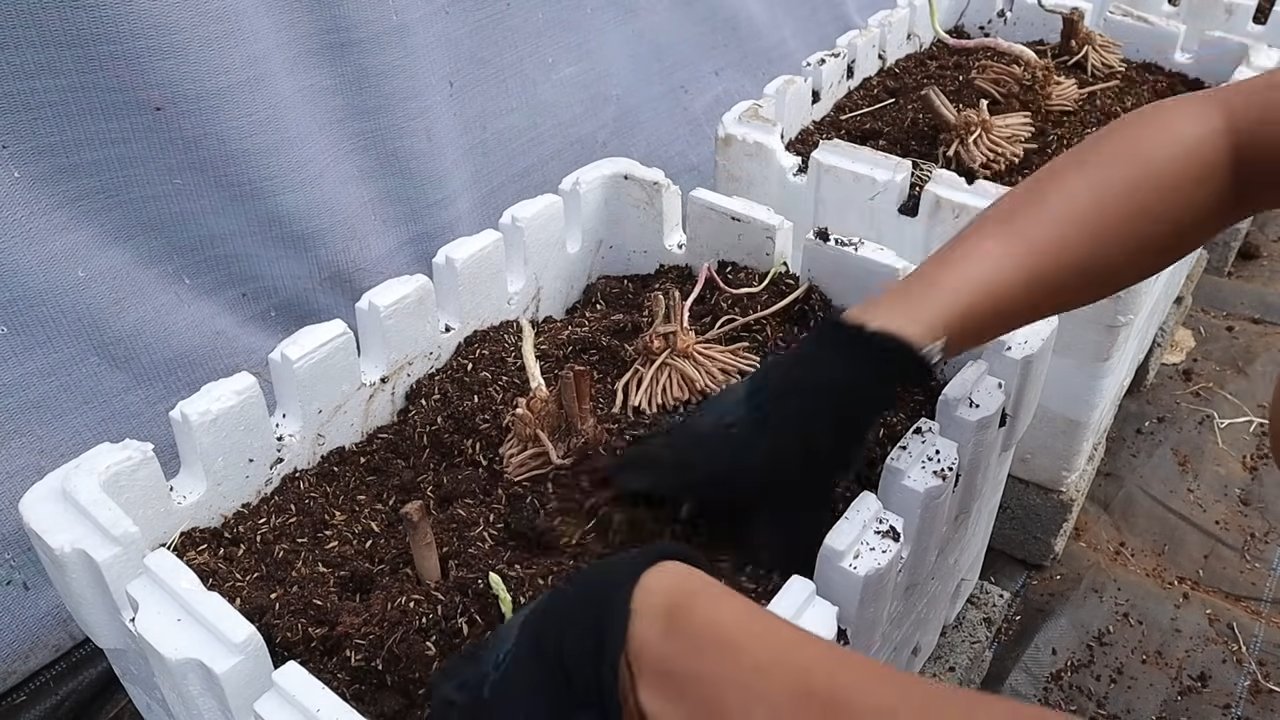
Conclusion
So, there you have it! Growing your own asparagus doesn’t have to be an intimidating, years-long endeavor. This DIY trick, focusing on creating the ideal growing environment and nurturing your young asparagus crowns, unlocks the potential for a bountiful harvest much sooner than you might think. We’ve shown you how to bypass some of the traditional hurdles and get you on the fast track to enjoying fresh, homegrown asparagus.
Why is this a must-try? Because it empowers you to control the quality and freshness of your food. Store-bought asparagus, while convenient, often lacks the vibrant flavor and crisp texture of freshly picked spears. Plus, you know exactly what’s gone into growing your own – no mystery pesticides or long-distance transportation. You’re investing in your health, your garden, and your taste buds!
Beyond the basic method, there’s plenty of room for experimentation. Consider these variations to tailor the process to your specific needs and preferences:
* Companion Planting: Enhance your asparagus patch by planting beneficial companions like tomatoes, basil, or marigolds. These plants can deter pests and improve soil health, creating a synergistic ecosystem that benefits your asparagus.
* Soil Amendments: While we’ve emphasized the importance of well-draining, nutrient-rich soil, you can further customize your soil mix with specific amendments. Adding bone meal can provide extra phosphorus for root development, while composted manure adds a slow-release source of nitrogen and other essential nutrients.
* Container Growing: If you’re short on space, don’t despair! Asparagus can be successfully grown in large containers. Just be sure to choose a pot that’s at least 18 inches deep and wide to accommodate the plant’s extensive root system. Use a high-quality potting mix and provide regular watering and fertilization.
* Different Varieties: Explore the world of asparagus varieties! ‘Jersey Knight’ is a popular choice for its high yields and disease resistance, while ‘Purple Passion’ offers a unique color and sweeter flavor. Experiment with different varieties to find your personal favorite.
This DIY approach to grow asparagus easily is not just about saving money; it’s about connecting with nature, learning new skills, and enjoying the unparalleled satisfaction of harvesting your own food. It’s about taking control of your food source and enjoying the freshest, most flavorful asparagus imaginable.
We wholeheartedly encourage you to give this method a try. Don’t be afraid to get your hands dirty and experiment with different techniques. The rewards are well worth the effort.
And most importantly, we want to hear about your experience! Share your successes, your challenges, and your tips in the comments below. Let’s build a community of asparagus enthusiasts and learn from each other. What variety did you choose? What challenges did you face, and how did you overcome them? Your insights could be invaluable to other aspiring asparagus growers. Let’s cultivate a thriving community of home gardeners, one delicious spear at a time!
Frequently Asked Questions (FAQ)
How long does it really take to harvest asparagus using this DIY method?
While traditional methods often require waiting two to three years before harvesting, this DIY approach, with its focus on optimal growing conditions and careful nurturing, can potentially shorten that timeframe. You might be able to harvest a small amount of asparagus in the second year after planting, but a more substantial harvest is typically expected in the third year. Remember, patience is key! The exact timing will depend on factors like your climate, soil quality, and the specific asparagus variety you’re growing.
What kind of soil is absolutely best for growing asparagus?
Asparagus thrives in well-draining, sandy loam soil that is rich in organic matter. The soil pH should be between 6.5 and 7.5. Avoid heavy clay soils, as they can become waterlogged and lead to root rot. Before planting, amend your soil with plenty of compost, well-rotted manure, or other organic matter to improve drainage and fertility. A soil test can help you determine the pH and nutrient levels of your soil and guide you in making necessary amendments.
How often should I water my asparagus plants?
Asparagus needs consistent moisture, especially during the growing season. Water deeply whenever the top inch of soil feels dry to the touch. Avoid overwatering, as this can lead to root rot. During periods of drought, you may need to water more frequently. Mulching around the plants can help retain moisture and suppress weeds.
What kind of fertilizer should I use for asparagus?
Asparagus benefits from regular fertilization. In early spring, before the spears emerge, apply a balanced fertilizer (e.g., 10-10-10) according to the package directions. You can also side-dress with compost or well-rotted manure. Avoid over-fertilizing, as this can lead to excessive foliage growth at the expense of spear production. A soil test can help you determine the specific nutrient needs of your soil.
How do I deal with common asparagus pests and diseases?
Asparagus beetles are a common pest that can damage the spears and foliage. Handpicking the beetles and larvae is an effective control method for small infestations. You can also use insecticidal soap or neem oil. Asparagus rust is a fungal disease that can cause orange pustules on the foliage. Ensure good air circulation around the plants and avoid overhead watering to prevent rust. Remove and destroy any infected foliage.
When is the best time to plant asparagus crowns?
The best time to plant asparagus crowns is in early spring, as soon as the soil can be worked. This allows the plants to establish their root systems before the heat of summer. In warmer climates, you can also plant asparagus in the fall.
How deep should I plant the asparagus crowns?
Dig a trench that is about 6-8 inches deep and 12 inches wide. Create a small mound in the center of the trench and place the asparagus crown on top of the mound, spreading the roots out around it. Cover the crown with about 2 inches of soil. As the plant grows, gradually fill in the trench with soil until it is level with the surrounding ground.
How far apart should I space the asparagus plants?
Space asparagus plants about 12-18 inches apart in rows that are 4-5 feet apart. This allows the plants plenty of room to grow and prevents overcrowding.
How do I know when to harvest asparagus?
Harvest asparagus spears when they are about 6-8 inches tall and about as thick as your finger. Use a sharp knife to cut the spears at ground level. Avoid harvesting all of the spears in the first few years, as this can weaken the plants. Allow some of the spears to fern out and produce foliage, which will help nourish the roots.
Can I grow asparagus in containers?
Yes, asparagus can be grown in containers, but you will need a large container that is at least 18 inches deep and wide. Use a high-quality potting mix and provide regular watering and fertilization. Container-grown asparagus may not produce as many spears as plants grown in the ground, but it is a good option for gardeners with limited space.
What do I do with the asparagus ferns in the fall?
In the fall, after the foliage has turned yellow or brown, cut the ferns back to ground level. This will help prevent diseases and pests from overwintering in the garden. You can also apply a layer of compost or well-rotted manure around the plants to provide nutrients for the following growing season.
How long will my asparagus plants last?
With proper care, asparagus plants can last for 15-20 years or even longer. This makes them a worthwhile investment for any gardener.

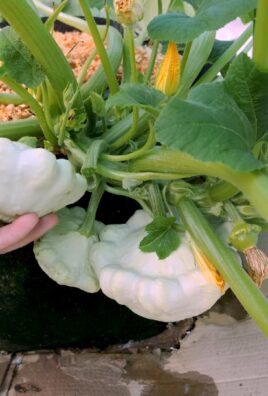
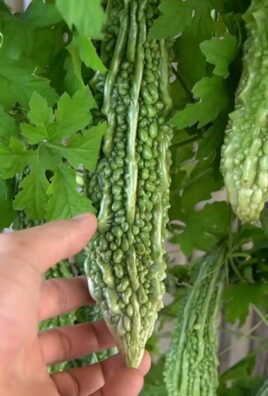
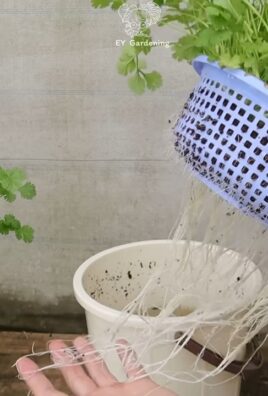
Leave a Comment